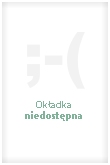
Kod: 05191418
Brand Management in the Age of Digitalization
Autor Eva Niesing
Studienarbeit aus dem Jahr 2014 im Fachbereich BWL - Marketing, Unternehmenskommunikation, CRM, Marktforschung, Social Media, Note: 1,3, Westfälische Wilhelms-Universität Münster, Sprache: Deutsch, Abstract: It s a lonely, scary t ... więcej
- Język:
 Niemiecki
Niemiecki - Oprawa: Miękka
- Liczba stron: 24
Wydawca: Grin Publishing, 2014
- Więcej informacji o książce

34.64 €
Zwykle: 37.21 €
Oszczędzasz 2.57 €

Dostępna u dostawcy
Wysyłamy za 15 - 20 dni
Zobacz książki o podobnej tematyce
-

Delphi Technique in Nursing and Health Research
57.97 € -2 % -

Desire and Truth
83.63 € -

Creativity and God
43.33 € -

Blue Mountains and Other Gaelic Stories from Cape Breton
36.36 € -4 % -

Algal Biotechnology and Environment
348.80 € -

Gender and Nation in Meiji Japan
57.67 € -

Best of Adrian Raeside
4.13 € -11 %
Podaruj tę książkę jeszcze dziś
- Zamów książkę i wybierz "Wyślij jako prezent".
- Natychmiast wyślemy Ci bon podarunkowy, który możesz przekazać adresatowi prezentu.
- Książka zostanie wysłana do adresata, a Ty o nic nie musisz się martwić.
Więcej informacji o Brand Management in the Age of Digitalization
Za ten zakup dostaniesz 87 punkty
 Opis
Opis
Studienarbeit aus dem Jahr 2014 im Fachbereich BWL - Marketing, Unternehmenskommunikation, CRM, Marktforschung, Social Media, Note: 1,3, Westfälische Wilhelms-Universität Münster, Sprache: Deutsch, Abstract: It s a lonely, scary time to be a brand manager (Fournier and Avery 2011, p. 193). Fournier and Avery s statement reflects that the brand management in times of the Web 2.0 has become a very complex and challenging undertaking. In this participatory online environment consumers are empowered to actively take part in the BM process instead of remaining passive receivers of the company s brand messages. Millions of people create and publish their own brand messages, also called brand related user generated content, in form of for instance YouTube videos, Amazon product reviews, Facebook groups and blog entries. Due to technological advances and the characteristics of the Web 2.0, these contributions from brand fans or brand critics can disseminate quickly and achieve important reach. Consequently, user generated brand messages represent important additional brand touch points next to the company s brand messages and may have a significant influence on the brand image (Burmann 2010, pp. 1 f.; Musser and O Reilly 2006, pp. 3-6; Wunsch-Vincent and Vickery 2007, pp. 9-17). Being still in its initial development phase, little knowledge exists on how brand managers should try to maintain the control over the BM process and approach brand related UGC. Instead of maintaining rather passive or simply monitoring these user contribitions, the BM may also counteract or even stimulate them in order to attain brand goals (Arnhold 2010, pp. 49 f.; Burmann 2010, pp. 1-3; Gensler et al. 2013, pp. 242-244; Hennig-Thurau, Hofacker and Bloching 2013, pp. 238 f.).§This paper s objective is to explain and classify different managerial approaches towards brand related UGC in times of the Web 2.0. Another purpose is to help managerial decision making by giving general recommendations on how to deal with these user generated brand messages. The paper is organized as follows: First, the author introduces a definition and the relevant characteristics of the Web 2.0. Chapter 2 presents the traditional BM process and explains how the Web 2.0 changed it. This theoretical background is followed by the introduction of the concepts of UGC and brand related UGC as well as its management in the third chapter. Based on the development of a new classification of managerial approaches towards brand related UGC, the author describes each approach and gives recommendations to brand managers. Finally, chapter four draws general conclusions and identifies promising areas for further research.
 Szczegóły książki
Szczegóły książki
34.64 €
- Pełny tytuł: Brand Management in the Age of Digitalization
- Podtytuł: How to Manage Brand Related User Generated Content in Times of the Web 2.0
- Autor: Eva Niesing
- Język:
 Niemiecki
Niemiecki - Oprawa: Miękka
- Liczba stron: 24
- EAN: 9783656710028
- ISBN: 3656710023
- ID: 05191418
- Wydawca: Grin Publishing
- Waga: 45 g
- Wymiary: 210 × 148 × 2 mm
- Data wydania: 08. August 2014
Ulubione w innej kategorii
-

Amigurumis - soft and cosy!
14.74 € -14 % -

Mein Kampf(German Language Edition)
29.29 € -17 % -

Amigurumis - small and sweet!
16.15 € -6 % -

Disney Rapunzel (Puzzle)
13.12 € -4 % -

Emil und die Detektive
9.99 € -

Hitster - Summer Party
21.30 € -4 % -

Harry Potter und der Stein der Weisen (Harry Potter 1)
11.71 € -

KLEINE PRINZ
5.65 € -

Mein Kampf(German Language Edition)
41.31 € -18 % -

Save You
13.43 € -6 % -

Mit Erfolg zum Goethe-Zertifikat C1
21.91 € -

Grammatik aktiv - Deutsch als Fremdsprache - 2. aktualisierte Ausgabe - A1-B1
22.62 € -

Save Us
13.53 € -5 % -

Prüfungstraining DaF - C1
22.62 € -

Hitster - Guilty Pleasure
21.30 € -4 % -

Anno 1800 - Die Erweiterung
21.30 € -4 % -

Kennst du das? Meine kleine Lernwelt
8.98 € -13 % -

Herr der Diebe
10.60 € -14 % -

Avocado Smash - 1ks
9.79 € -4 % -

Oldtimer Katalog Nr. 38
23.53 € -9 % -

Hitster - Schlager Party
21.30 € -4 % -

Meine Reise durch Europa
10.09 € -9 % -

Disney Marvel Ghost Spider, GID 25cm
11.20 € -

Wir Kinder vom Bahnhof Zoo
12.52 € -

Nova Luna
21.81 € -9 % -

Die Verwandlung
2.62 € -

Ravensburger Elfer raus! Der Klassiker, Kartenspiel 2 - 6 Spieler, Spiel ab 7 Jahren für Kinder und Erwachsene
9.79 € -4 % -

A-Grammatik
21.71 € -

Die Welt unter der Lupe - zu Lande
8.58 € -9 % -

Ben liebt Anna
6.86 € -6 % -

Begegnungen
27.26 € -

My Rummy
19.79 € -

Christl Vogls Ausmalreise - Der verwunschene Wald
10.60 € -14 % -

Save Me
12.21 € -14 % -

CATAN - Ergänzung 5-6 Spieler - Das Spiel
18.07 € -

Lippels Traum 1
7.26 € -14 % -

RBL Rubble & Crew Core Vehicle Motor
20.09 € -

Zettelmagnet Metall Schutzengel
8.48 € -10 % -

GND PAW Plüsch 15 cm Everest
12.62 € -

Menschen A1/1
9.69 € -13 % -

Sechs nimmt!
7.77 € -9 % -

Der Steppenwolf
10.60 € -

GND PAW Plüsch 15cm Tracker
11.91 € -

Duden 12+: Kennst du das? Meine bunte Kinderwelt (Würfel)
8.27 € -12 % -

Pixi-8er-Set 254: Die beliebtesten Bilderbuch-Helden bei Pixi (8x1 Exemplar)
7.16 € -14 % -

Lobo 77
7.77 € -4 % -

Schreibtraining für das Goethe-Zertifikat B2. Übungsbuch
29.49 € -

Die Verwandlung
4.03 € -

Halali!
15.65 € -4 %
Osobní odběr Bratislava a 2642 dalších
Copyright ©2008-24 najlacnejsie-knihy.sk Wszelkie prawa zastrzeżonePrywatnieCookies


 Vrácení do měsíce
Vrácení do měsíce Zdarma od 49.99 €
Zdarma od 49.99 € 02/210 210 99 (8-15.30h)
02/210 210 99 (8-15.30h)